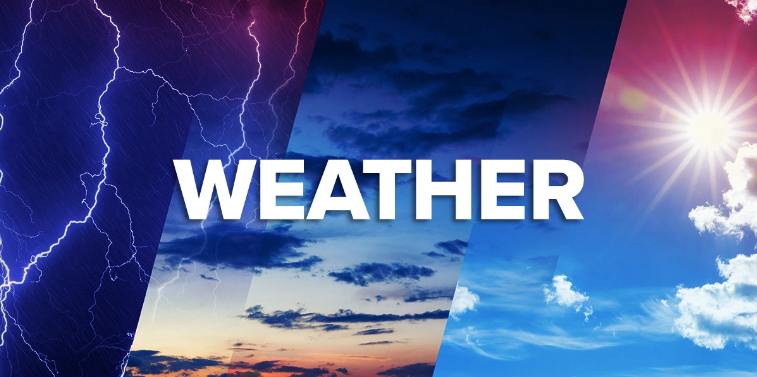||| FROM KRISTA BOUCHEY for ORCAS POWER & LIGHT COOPERATIVE |||
The Bailer Hill Microgrid project on San Juan Island is a future Community Solar and battery storage site. Community Solar is a local solution to offset expensive mainland power and offer renewable power to co-op members who do not have the ability to install rooftop solar. OPALCO can use the solar and battery storage energy to offer a limited green power supply for emergencies.
In “Part 1: Why Local, Renewable Power Generation”, OPALCO outlined the critical point we are at as an essential service that is facing grave uncertainties in the future power supply in the Northwest region. The increasing demand is not keeping up with the limited supply. And now more than ever, the island communities need to be looking at reliable, renewable carbon free solutions.
In order for OPALCO to install utility scale solar projects in San Juan County, they are required to go through an extensive Conditional Use Permitting process. Most of the land use designations are remnants from a different era with strict guidelines that were appropriate when diesel generators were the standard.
Before moving forward on a Conditional Use Permit, the applicant must ensure that the land use designation allows for it and complete a Land Use Pre-Application Meeting. OPALCO completed the preliminary process in 2021 to ensure they could meet the requirements for the permit. There was nothing flagged as unusual in the Pre-Application Meeting.
This project, if fully sited, will more than double the amount of energy as all current rooftop solar in San Juan County at small fraction of the cost. The solar panels will track with the sun to maximize production throughout the year.
Additionally, OPALCO will partner with local farmers to graze sheep on the site.
Why did OPALCO site this project on agriculture land?
San Juan County does not allow for these types of projects on 65% of county lands. Agricultural land is one of the only sites where this kind of project is allowed. San Juan County has land use designations in place that protect our most pristine land areas such as Turtleback Mountain from future development and OPALCO is equally committed to ensuring these areas are protected. OPALCO’s mission ensures that stewarding the environment remains a top priority.
This parcel has poor soil quality and will take years to get the site back to productive farming. One of the best ways to help soil quality is to graze farm animals on site to add nutrients back to the soil.
OPALCO partnered with the San Juan Islands Conservation District to develop a farm plan for the site. The farm plan outlines the best practices for OPALCO to follow that will result in improved soil health over the lifetime of the 25-year project. OPALCO will make key infrastructure improvements to the land, including increased vehicle access, fencing, and power and water supply, aiding in current and future farm uses. Partnering with local farmers to graze sheep will ensure the rural character of the area will be maintained while adapting to the new reality to do everything we can to combat climate change.
The parcel will be a highly productive solar site as it is open and sunny. It is close to existing infrastructure—making the project more economical—and can directly feed power to the population center of Friday Harbor which has the hospital, firehall, and grocery stores. If a major outage hits San Juan County, the microgrid could offer approximately 4 hours of clean power to these critical services.
One of the commitments made by Washington State while we transition to a clean energy future is to not unduly burden low- and middle-income users. OPALCO secured a $1M grant from the Washington State Department of Commerce for this project that will directly benefit our low-income energy users. This is ensuring these local projects are responsible and just for all co-op members.
Agri-Solar Benefits
Agri-solar is the future! Throughout the country, pairing solar energy production with farming is proving to be a win for all involved. The dual-use projects provide economic and environmental benefits. Farmers can maximize their farmland by producing energy while keeping their land in production. Solar is a renewable energy source that can reduce impacts to our climate and move the needle on getting to our carbon reduction goals.
OPALCO needs community support to move these renewable energy projects forward. There are trade-offs we must make for every energy solution and OPALCO is looking to find the least impact, highest reward when siting these renewable energy projects.
Our Energy Future
OPALCO completely supports energy conservation efforts to ensure our current usage is making wise use of electricity. Pairing conservation efforts with renewable energy projects is the key to meeting our future energy supply needs. Through the Switch It Up on-bill financing program OPALCO has funded over $20M in energy savings and individual renewable energy projects throughout the County.
OPALCO also gives out ~$300K in rebates for efficiency projects each year.
OPALCO is mandated to provide co-op members with as much safe, reliable energy as they need. This is our opportunity to begin to take control of our energy supply to ensure that fossil fuel based sources are not what will be fueling our future energy needs.
OPALCO had over 200 local letters of support for the Bailer Hilll projects. We need to continue to get this kind of support to for these projects in order to be successful. OPALCO is looking to work with co-op members for balanced solutions.
Read Part 1 “Why Local Power Generation is Important” of this series to learn why we need to be investing now in local renewable energy. Costs are going up and supply is going down – electricity is critical for our daily life. The community needs to step up to ensure we have reliable power well into the future. Now is the time to start thinking differently about these challenges so we can begin to implement the appropriate solutions. Stay tuned for Part 3 What’s Next for Renewable Energy in San Juan County.
We have detailed sources and deep dives into this data on our website for anyone who is interested in learning more – www.opalco.com.
Orcas Power & Light Cooperative (OPALCO) is our member-owned cooperative electric utility, serving more than 11,400 members on 20 islands in San Juan County. OPALCO provides electricity that is 97% greenhouse-gas free and is generated predominantly by hydroelectric plants. OPALCO was founded in 1937.
**If you are reading theOrcasonian for free, thank your fellow islanders. If you would like to support theOrcasonian CLICK HERE to set your modestly-priced, voluntary subscription. Otherwise, no worries; we’re happy to share with you.**









I like the idea of encouraging the grazing of animals around the photovoltaic installations and improving soil quality. Makes sense.
Is there any easy way to get 8 hours of storage rather than by doubling the number of batteries? To get us through the night.
I wrote and spoke in support of the plan. That small, thin-soiled, bed rock pocked parcel can only be improved by this 25 year plan. The “blight on valley scenery” and “removal of Bald Eagle perching snags” are silly notions given the severity of the relevant issues facing us.
But I agree with Michael that more discussion of the benefits given outages or brownouts would help. Surely a disruption in January as opposed to July are two entirely different calculations.
My understanding is that the hospital and other public health/safety buildings (SJI) are already backed up with diesel generators so should not be part of the load. If a mandatory electrical use conservation measure were in place for such emergencies couldn’t this solar generation array and battery storage under certain circumstances be prolonged?
How would the daily power generated and sent into the grid reduce our kwh rates if at all?
I support this project, but going forward it is important to carefully map wetlands on future proposed sites.
There was a rumor that Foster Hildreth, the CEO of OPALCO, joked about a “mud puddle” at the Baylor Hill site.
Wetlands must be taken seriously because wetlands provide us with important carbon storage benefits.
“Given that large stores of soil carbon are protected from decomposition in wetlands, wetland drainage and conversion to other land uses presents the biggest threat to large and rapid greenhouse gas emissions from wetlands.”
from: Structural and functional loss in restored wetland ecosystems 2012
David Moreno-Mateos 1, Mary E Power, Francisco A Comín, Roxana Yockteng
WETLAND ECOSYSTEMS are stunningly effective at soaking up carbon from the atmosphere. Despite covering only roughly 6 to 8% of the world’s land surface, they contain roughly 20 to 30% of the carbon stored in the soil. And because the plant matter in the waterlogged soil decays slowly, their carbon tends to stay put.
Bailer Hill, not Baylor Hill.
My mistake.
I never have been a good speller.
Janet, Thanks for your support of the project. We all want to see solutions that help combat climate change.
If you ever want to check on a “rumor” or find out what anyone on the OPALCO team says please contact us and we can get it straightened out rather than continuing the rumors. Getting factual information out to the public is so important.
Foster and the OPALCO team have referred to the area as a man made farm pond throughout the process based on the report we submitted to the County from a wetland specialist and is public information on the county website as part of our permit application.
Renewable energy projects like the Bailer Hill Microgrid will not only be a huge step towards a sustainable and resilient community but it directly benefits our low income community as we leverage state grant funds to reduce the energy burden for those who need it most.
Krista,
I am sorry about propagating a rumor. I talked to Foster and OPALCO did have a wetlands specialist survey the site. There is a man-made farm pond at the Bailer Hill Farm. Farm ponds are not natural wetlands -so they do not restrict development. But farm ponds can be helpful for threatened frogs and other amphibians. Here is an article about livestock ponds helping threatened red-legged frogs in California:
https://baynature.org/article/a-tale-of-two-ponds/
I do think that combining solar with agriculture in San Juan County will be good for both the farming community and for all us OPALCO members. We need back-up power to run essential public facilities during power outages. And some farmers would appreciate the extra income from having solar sited on their land as well as shade for their sheep and other livestock during hot weather.
If the solar is used during a blackout:
* Which essential public facilities will have power during a blackout, and has OPALCO already installed the isolation switches to direct power to those facilities?
* Which facilities get priority?
* As power fluctuates rapidly (since solar is intermittent), which facilities will be at the top of the list?
* Is priority determined by location and proximity to the solar install? Or based on importance by some criteria?
Thank you.